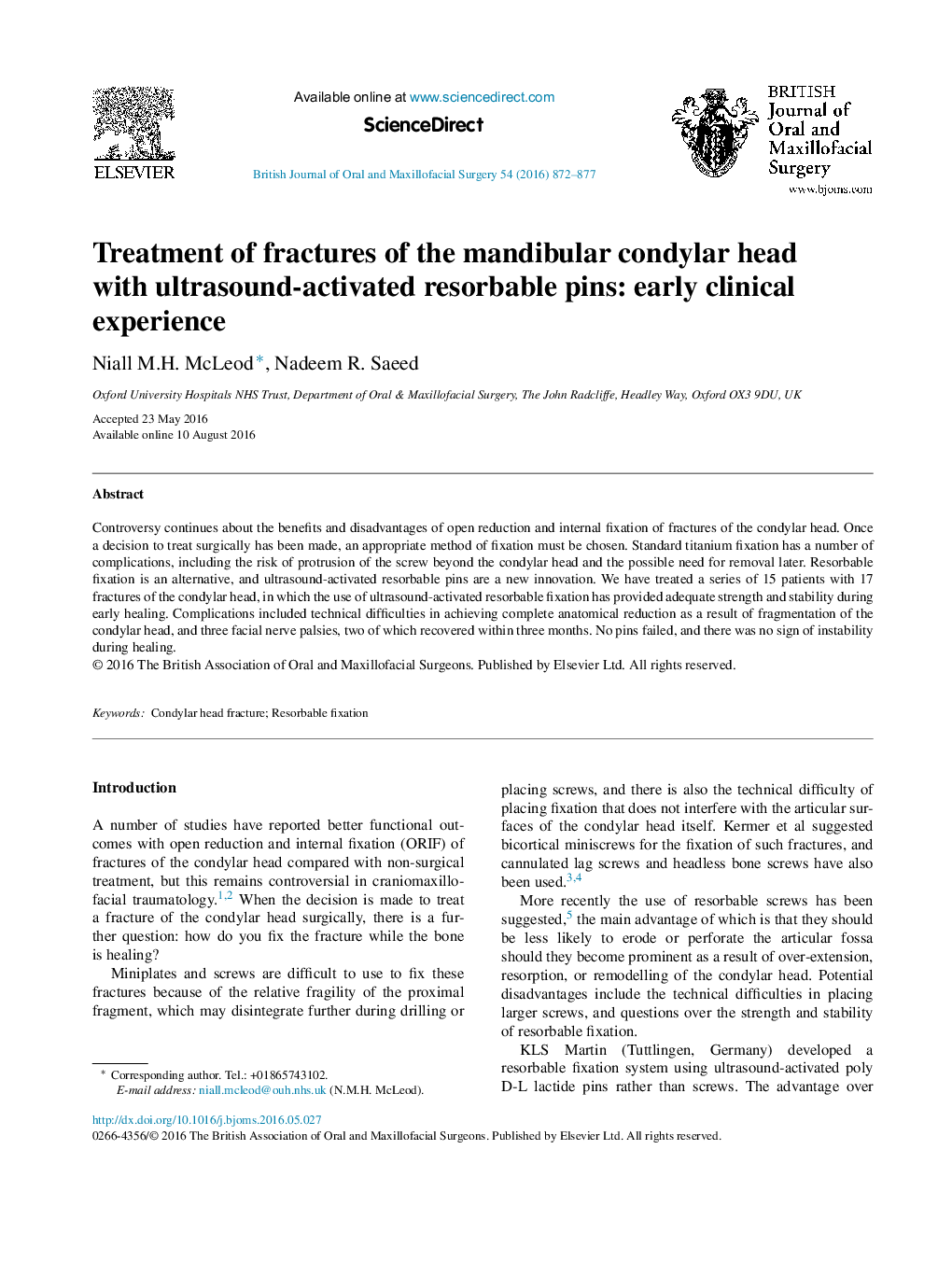| Article ID | Journal | Published Year | Pages | File Type |
|---|---|---|---|---|
| 5638659 | British Journal of Oral and Maxillofacial Surgery | 2016 | 6 Pages |
Controversy continues about the benefits and disadvantages of open reduction and internal fixation of fractures of the condylar head. Once a decision to treat surgically has been made, an appropriate method of fixation must be chosen. Standard titanium fixation has a number of complications, including the risk of protrusion of the screw beyond the condylar head and the possible need for removal later. Resorbable fixation is an alternative, and ultrasound-activated resorbable pins are a new innovation. We have treated a series of 15 patients with 17 fractures of the condylar head, in which the use of ultrasound-activated resorbable fixation has provided adequate strength and stability during early healing. Complications included technical difficulties in achieving complete anatomical reduction as a result of fragmentation of the condylar head, and three facial nerve palsies, two of which recovered within three months. No pins failed, and there was no sign of instability during healing.
